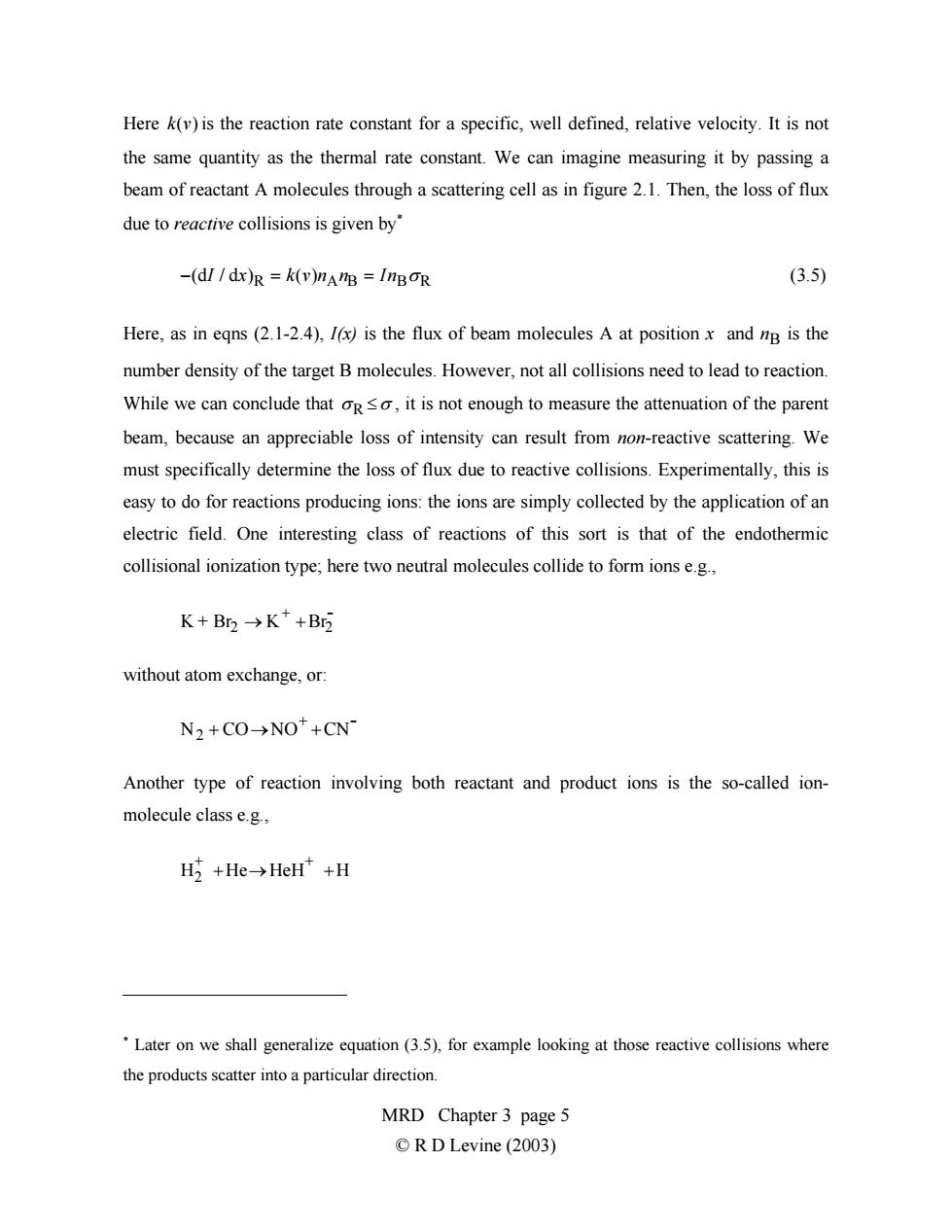正在加载图片...

Here k(v)is the reaction rate constant for a specific,well defined,relative velocity.It is not the same quantity as the thermal rate constant.We can imagine measuring it by passing a beam of reactant A molecules through a scattering cell as in figure 2.1.Then,the loss of flux due to reactive collisions is given by" -(dI dx)R=k(v)nAnB =InBOR 3.5) Here,as in eqns(2.1-2.4),Ix)is the flux of beam molecules A at position x and nB is the number density of the target B molecules.However,not all collisions need to lead to reaction. While we can conclude that oRso,it is not enough to measure the attenuation of the parent beam,because an appreciable loss of intensity can result from non-reactive scattering.We must specifically determine the loss of flux due to reactive collisions.Experimentally,this is easy to do for reactions producing ions:the ions are simply collected by the application of an electric field.One interesting class of reactions of this sort is that of the endothermic collisional ionization type;here two neutral molecules collide to form ions e.g., K+B→K++B5 without atom exchange,or: N2+CO→NO+CN Another type of reaction involving both reactant and product ions is the so-called ion- molecule class e.g., H+He→HeH+H Later on we shall generalize equation(3.5),for example looking at those reactive collisions where the products scatter into a particular direction. MRD Chapter 3 page 5 ©R D Levine(2003)Here is the reaction rate constant for a specific, well defined, relative velocity. It is not the same quantity as the thermal rate constant. We can imagine measuring it by passing a beam of reactant A molecules through a scattering cell as in figure 2.1. Then, the loss of flux due to reactive collisions is given by k(v) ∗ −(dI / dx)R = k(v)nAnB = InBσ R (3.5) Here, as in eqns (2.1-2.4), I(x) is the flux of beam molecules A at position x and nB is the number density of the target B molecules. However, not all collisions need to lead to reaction. While we can conclude that σ R ≤σ , it is not enough to measure the attenuation of the parent beam, because an appreciable loss of intensity can result from non-reactive scattering. We must specifically determine the loss of flux due to reactive collisions. Experimentally, this is easy to do for reactions producing ions: the ions are simply collected by the application of an electric field. One interesting class of reactions of this sort is that of the endothermic collisional ionization type; here two neutral molecules collide to form ions e.g., K + Br 2 → K+ +Br2 - without atom exchange, or: N2 + CO→NO+ +CN- Another type of reaction involving both reactant and product ions is the so-called ionmolecule class e.g., H2 + +He→HeH+ +H ∗ Later on we shall generalize equation (3.5), for example looking at those reactive collisions where the products scatter into a particular direction. MRD Chapter 3 page 5 © R D Levine (2003)